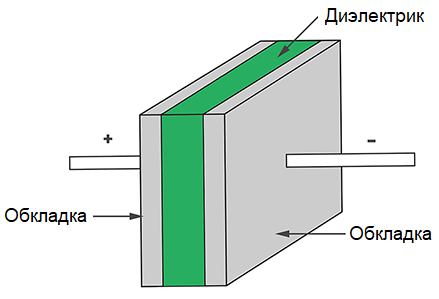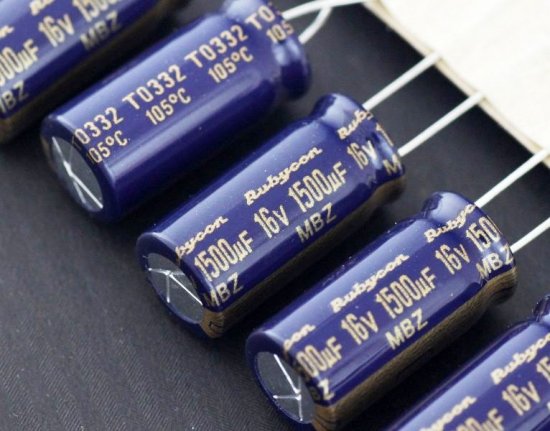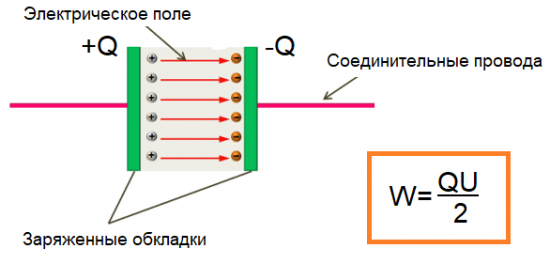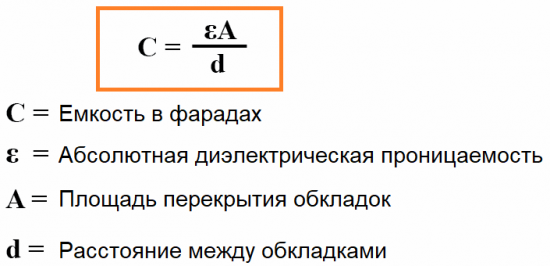What determines the capacitance of a capacitor?
The capacitor is designed for temporary storage of electrical energy in the form of potential energy divided in space into positive and negative electric charges, that is, in the form of an electric field in the space between them. Accordingly, an electric capacitor includes three main components: two conducting plates, on which separate charges are located in a charge capacitor, and a dielectric layer located between the plates.
Capacitor plates, depending on the type of this electrical product, can be made in different ways, ranging from simple aluminum plates wound on a roll with a paper interlayer, to chemically oxidized plates or a metallized dielectric layer. In any case, there is a layer of dielectric and a plate between which it is tightly fixed - this is basically a capacitor.

The dielectric may be paper, mica, polypropylene, tantalum, or other suitable electrical insulating material with the required dielectric constant and electrical strength.
As you know, the energy of electric charges separated in space is equal to the product of the amount of charge Q displaced (from one body to another) by the potential difference between the charged bodies U.
So, the energy of separated charges on the capacitor plates depends not only on the number of separated charges, but also on the parameters of its plates and the dielectric, since the dielectric, when polarized, stores energy in the form of an electric field, the strength of which determines the potential difference U between the separated charges located on the plates of the capacitor.
Because the potential difference between charges separated in space depends on the strength of the electric field and on the distance between them. Actually — on the thickness of the dielectric between the charged plates when it comes to a capacitor.
At the same time, the greater the area of overlap of the plates A and the greater the absolute (and relative) dielectric constant of the dielectric is — the stronger the separated charges located on the plates are attracted to each other — the more significant their potential energy—the more work will be required of the EMF source to charge that capacitor.
By separating charges in the process of transferring electrons from one plate to another, the source of EMF performs exactly such a volume of work on charging the capacitor, the amount of which will be identical energy of a charged capacitor.
With this discontinuity, the energy of the charged capacitor, in addition to the amount of charge transferred from plate to plate, (it can be different) will depend on the overlapping area of the plates A, on the distance between the plates d, and on the absolute dielectric constant of the dielectric e.
These determining parameters of the construction of a particular capacitor are constant, their aggregate ratio can be called the capacitance of the capacitor C. Then we can say with confidence that the capacitance of the capacitor C depends on the overlapping area of the plates A, on the distance between them d and of the dielectric constant e.
The dependence of the capacitance on these parameters is very easy to understand if we consider a flat capacitor.
The greater the area of overlap of its plates, the greater the capacity of the capacitor, since the charges interact over a larger area.
The smaller the distance between the plates (in fact, the thickness of the dielectric layer), the greater the capacity of the capacitor, because the force of interaction of the charges increases as they approach.
The greater the dielectric constant of the dielectric between the plates, the greater the capacitance of the capacitor, because the greater the strength of the electric field between the plates.
See also:Why are capacitors used in electrical circuits? andCapacitors and Batteries - What's the Difference?



